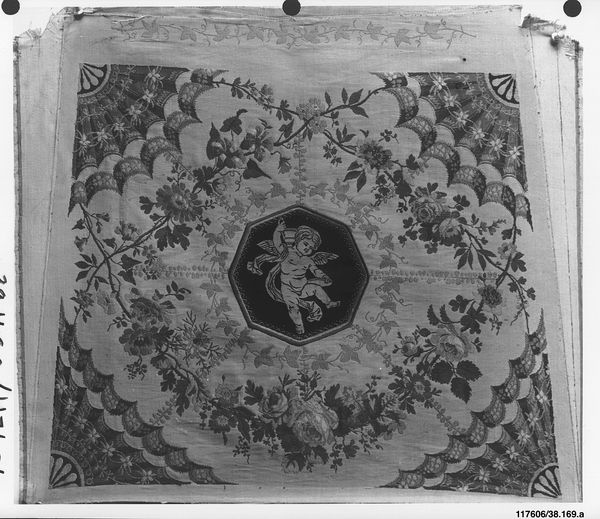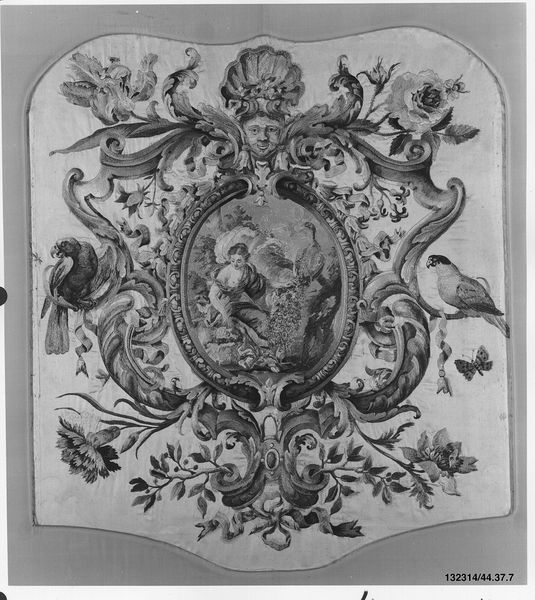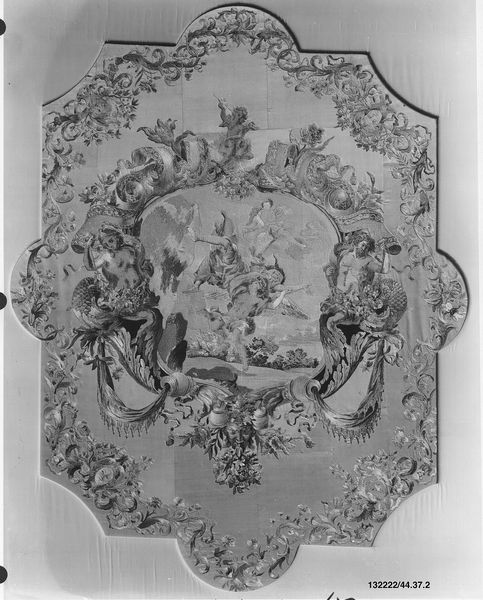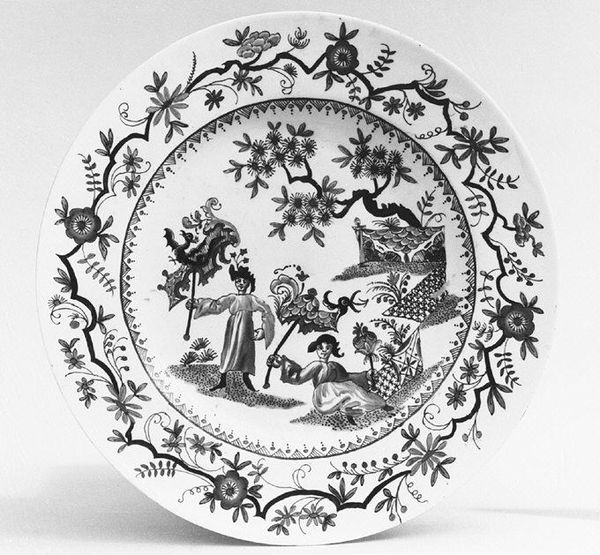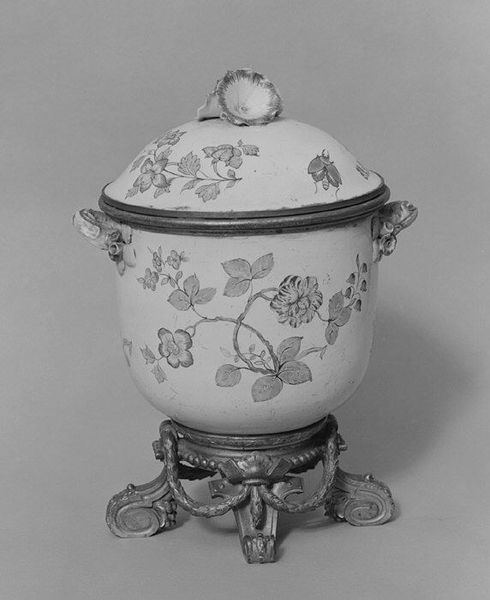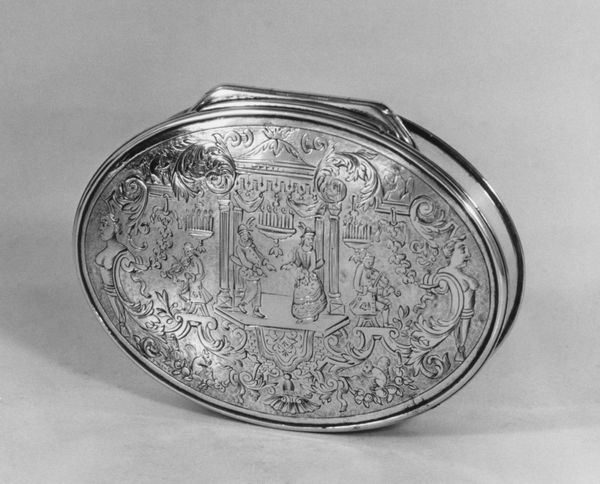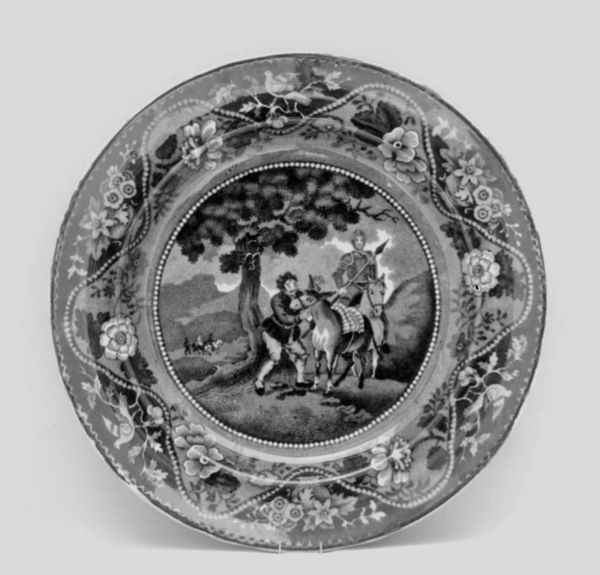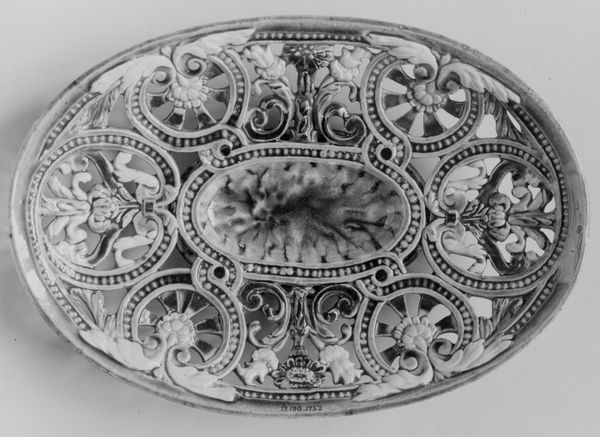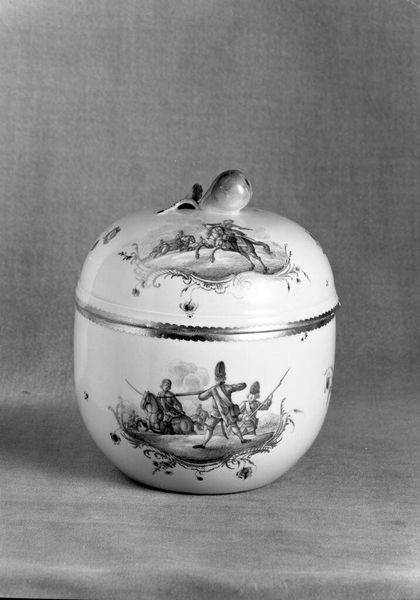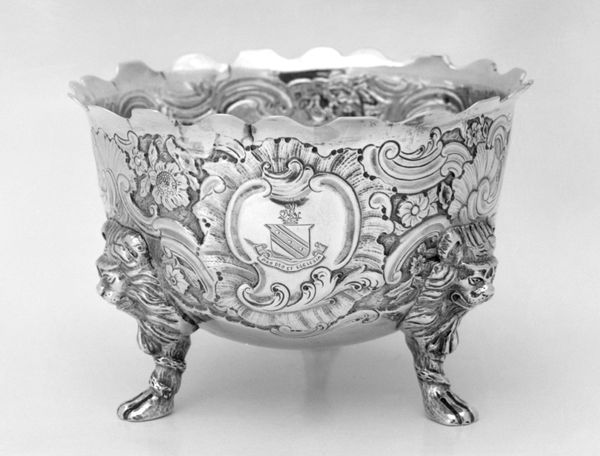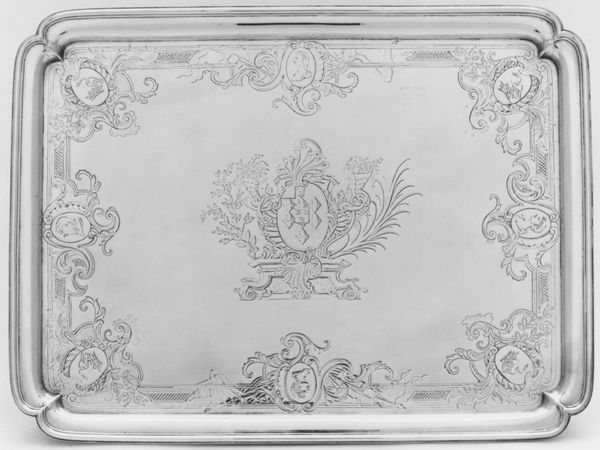
textile, sculpture
#
sculpture
#
landscape
#
textile
#
sculpture
#
decorative-art
#
organic texture
#
rococo
Dimensions: H. 34 x W. 35 in. (approx.) (86.4 x 88.9 cm)
Copyright: Public Domain
Curator: Here we have an armchair seat, created sometime between 1754 and 1756, attributed to the Beauvais manufactory. It’s a rather ornate piece of decorative art, currently residing here at the Metropolitan Museum of Art. Editor: My initial reaction? I’m drawn to the interplay of textures and patterns. The central scene is framed by such a delicate yet dense floral tapestry. There’s a softness despite the formal structure. Curator: It's Rococo at its finest, wouldn't you say? This piece, beyond its aesthetic appeal, speaks volumes about the societal hierarchies of the 18th century. Luxury goods like these were potent symbols of status, accessible only to a privileged few. Editor: Agreed, though I see more than mere display of wealth. Look at how the weaver uses line and shape to lead our eye. The curve of the branches mimics the curve of the frame; that symmetry gives me a feeling of harmony. Curator: It’s a crafted serenity, no doubt. But I am always asking, at whose expense was this tranquility produced? Beauvais tapestries like this were often commissioned for aristocratic residences, essentially obscuring the exploitation inherent in their creation. Editor: I don’t disagree. Yet, considering the textile as a visual language, those meticulously woven flowers aren’t just decoration. They reflect a controlled nature, almost an ideal form—perhaps a commentary on taming the wild? Curator: Perhaps, but the very notion of "taming the wild" is a culturally loaded one, justified by Enlightenment ideals that reinforced colonial exploitation and a human/nature binary. I am more concerned with what this idealized rendering conceals about the labour that enabled its existence. Editor: An important reminder that beauty does not exist in a vacuum. I’m just caught by the technical mastery here. That gradient between light and shadow around the birds—it has depth, almost a sculptural quality. Curator: Which indeed highlights how this so-called "decorative" piece performed as a three-dimensional sculptural marker within these constructed environments. These chair seats became almost living canvases of propaganda. Editor: Well, considering both form and context gives us a fuller appreciation. For me, getting closer to the visual structures offers a glimpse into broader cultural frameworks. Curator: And by interrogating those frameworks, we understand the aesthetic and its enduring echoes more deeply. It’s more than a pretty picture; it’s an encoded narrative.
Comments
No comments
Be the first to comment and join the conversation on the ultimate creative platform.


